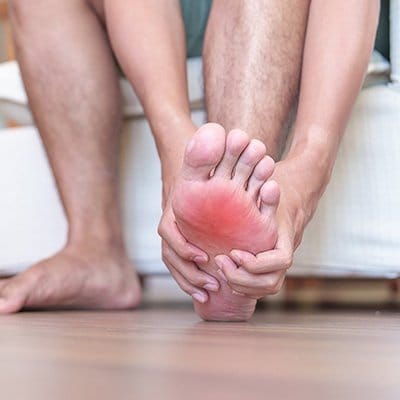Arch Pain

Arch pain can begin with something as simple as unsupportive shoes or flat feet or can show up after a weight gain, overuse, or an acute injury. By far the most common root cause is a condition called plantar fasciitis, a disorder of the connective tissue that supports the foot’s arch.
You’ll most likely experience arch pain early in the morning or after a prolonged period of rest. If the strain on the arch continues (particularly after walking or standing for long periods of time) and is left untreated, a bony protrusion, also known as a heel spur could develop. As always, it is important to treat the condition as soon as possible before it worsens.
Prevention & Treatment
Fortunately, arch pain is easy to address. The simplest way to alleviate pain in the arch is to wear comfortable footwear with plenty of arch support–avoid high heels whenever possible, choose footwear with soft leather uppers and shock-absorbing soles, and add removable foot insoles. If you experience occasional flare-ups, try anti-inflammatory medication and simple stretching exercises.
When to Seek Care
If arch pain persists after you have done what you can on your own, or if the pain starts to interfere with your daily activities then you should consider seeking the care of a podiatrist. Arch pain symptoms that a podiatrist should look at can include:
- Pain before, during, and after daily activity or athletic performance
- Pain so severe it affects daily or athletic performance
- Burning sensation in the arch
- Difficulty standing on tip toes
- Inflammation
- Redness
- Heat
- Aching